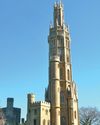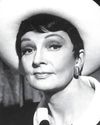
The expression ‘stone cold’ comes chillingly and beautifully to life, even in summer, with the stables of Seaton Delaval in Northumberland. Feeling frozen to the marrow of your bones, you are surrounded by stone on all sides, to outstandingly noble effect.
It stands on the bleak windswept flatlands hard by the North Sea. Pity the photographer who took the picture opposite – ie me. I was chilled to the very roots of my boots when I took it.
Every centimetre of the building is made of cold, grey stone: the walls of finely dressed stone, the three broad, segmental transverse arches – all ashlar – the softly bulging floors, the stall partitions, the arched mangers and the hay racks.
The stables are of a monumental dignity worthy of attribution to Sir John Vanbrugh, the architect of the great house these stables were built to serve. In fact, the stables date from a full 50 years later. Vanbrugh’s Palladian, laced through-with-baroque masterstroke of Seaton Delaval Hall was started in 1718; the stables were begun in 1768.
Admiral George Delaval had commissioned Vanbrugh to design the house, writing that the architect was ‘not disposed to starve the design at all’. Together, they forged forth with a forceful and aggressive masterpiece. The stables were, it would seem, the work of Delaval’s dashing great-nephew, Sir Francis Delaval.
This story is from the September 2020 edition of The Oldie Magazine.
Start your 7-day Magzter GOLD free trial to access thousands of curated premium stories, and 8,500+ magazines and newspapers.
Already a subscriber ? Sign In
This story is from the September 2020 edition of The Oldie Magazine.
Start your 7-day Magzter GOLD free trial to access thousands of curated premium stories, and 8,500+ magazines and newspapers.
Already a subscriber? Sign In

Travel: Retreat From The World
For his new book, Nat Segnit visited Britain’s quietest monasteries and islands to talk to monks, hermits and recluses

What is... a nail house?
Don’t confuse a nail house with a nail parlour. A nail house is an old house that survives as new building development goes on all around it.

Kent's stairway to heaven
Walter Barton May’s Hadlow Castle is the ultimate Gothic folly

Pursuits
Pursuits

The book that changed the world
On Marcel Proust’s 150th anniversary, A N Wilson praises his masterpiece, an exquisite comedy with no parallel

RIP the playboys of the western world
Charlie Methven mourns his dashing former father-in-law, Luis ‘the Bounder’ Basualdo, last of a dying breed

Arts
Arts

My film family's greatest hits
Downton Abbey producer Gareth Neame follows in the footsteps of his father, grandfather and great-grandmother, a silent-movie star

Books
Books

A lifetime of pin-ups
Barry Humphries still has nightmares about going on stage. He’s always admired the stars who kept battling on